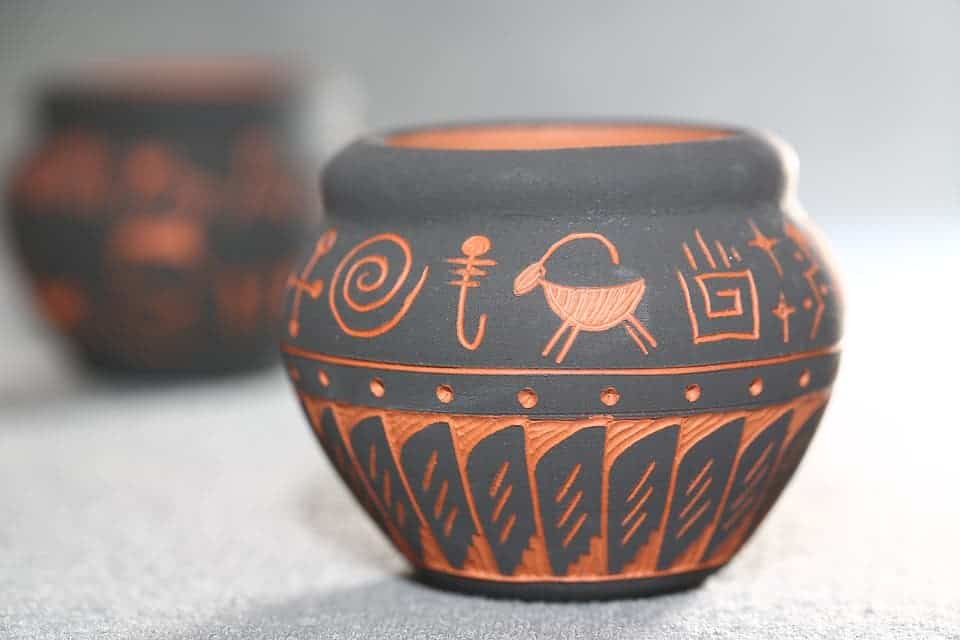Ancient communities said ‘nay’ to beef and ‘yay’ to mutton and chevon when faced with shifting climates.

Image via Pixabay.
We’re not the first generation to struggle with climate change. While our current predicament is of our own making, ancient communities also had to struggle with natural climate shifts. New research explores how farmers 8,200 years ago adapted to such changes.
Food for dry days
“Changes in precipitation patterns in the past are traditionally obtained using ocean or lake sediment cores,” says Dr. Mélanie Roffet-Salque, lead author of the paper. “This is the first time that such information is derived from cooking pots.”
“We have used the signal carried by the hydrogen atoms from the animal fats trapped in the pottery vessels after cooking. This opens up a completely new avenue of investigation – the reconstruction of past climate at the very location where people lived using pottery.”
The study centers on the Neolithic (late stone age) and Chalcolithic (copper age) city of Çatalhöyük in southern Anatolia, Turkey. Çatalhöyük was one of the first cities (if not the first city) to pop up, being settled from approximately 7500 BC to 5700 BC.
Some 8,200 years ago, an event would force these ancient city folk to change their lifestyle. A lake in northern Canada spewed huge quantities of glacial runoff into the ocean, which impacted global water currents, leading to a sudden drop in average temperatures. Hoping to get a better understanding of how such changes impacted the lives of people living during the time, a team led by Dr. Roffet-Salque from the University of Bristol looked at what these people ate.
Animal bones excavated at the site revealed that the city’s inhabitants tried their hand at rearing sheep and goats instead of cattle, as these smaller animals are more resistant to drought. The bones also show an unusually high number of cut marks. The team reports that this is a sign of people trying to free every last scrap of meat from the bones — suggesting that food was likely scarce.
This food scarcity was brought on by changes in precipitation patterns in the Anatolian region during this time, the team reports.
Food for… climate research?
The people of Çatalhöyük didn’t leave any written records we could check — but they did have clay pots used for preparing food. The analysis first revealed the presence of ruminant fats on the pots, which were consistent with and reinforced the hypothesis that herders in Çatalhöyük began favoring sheep and goats in their flocks.
This study is the first time that animal fat residues recovered in an archaeological setting have been used to gauge climate evolution in the past. The team analyzed the isotopic ratios of hydrogen atoms (the deuterium to hydrogen ratio) from these fats. Since animals incorporate atoms from their food and drink, the team found a change in this isotope ratio over the period corresponding to the climate event.
The authors also examined the animal fats surviving in ancient cooking pots. They detected the presence of ruminant carcass fats, consistent with the animal bone assemblage discovered at Çatalhöyük. For the first time, compounds from animal fats detected in pottery were shown to carry evidence for the climate event in their isotopic composition.
“It is really significant that the climate models of the event are in complete agreement with the H signals we see in the animal fats preserved in the pots,” says co-author Richard Evershed.
“The models point to seasonal changes farmers would have had to adapt to — overall colder temperatures and drier summers — which would have had inevitable impacts on agriculture.”
The findings are important given our own climatic complications. We didn’t really know the implications of this event — known as the 8.2 ka event — or that of a similar but smaller one called the 9.2 ka event. They’re encouraging in the sense that the effects weren’t as dramatic as they could have been. There is “no evidence for a simultaneous and widespread collapse, large-scale site abandonment, or migration at the time of the events,” which was a real possibility given that early populations were at the mercy of the environment.
However, the study shows that climate change does indeed come with impacts on the food supply. Society today is much better equipped to mitigate the effect of precipitations on crops, and our food networks span the globe. Even so, we’re still dependent on the environment, and there are many more mouths to feed today. In this light, the findings raise a warning that we should look to our crops lest plates go empty in the near future.
The paper “Evidence for the impact of the 8.2-kyBP climate event on Near Eastern early farmers” has been published in the journal Proceedings of the National Academy of Sciences.






